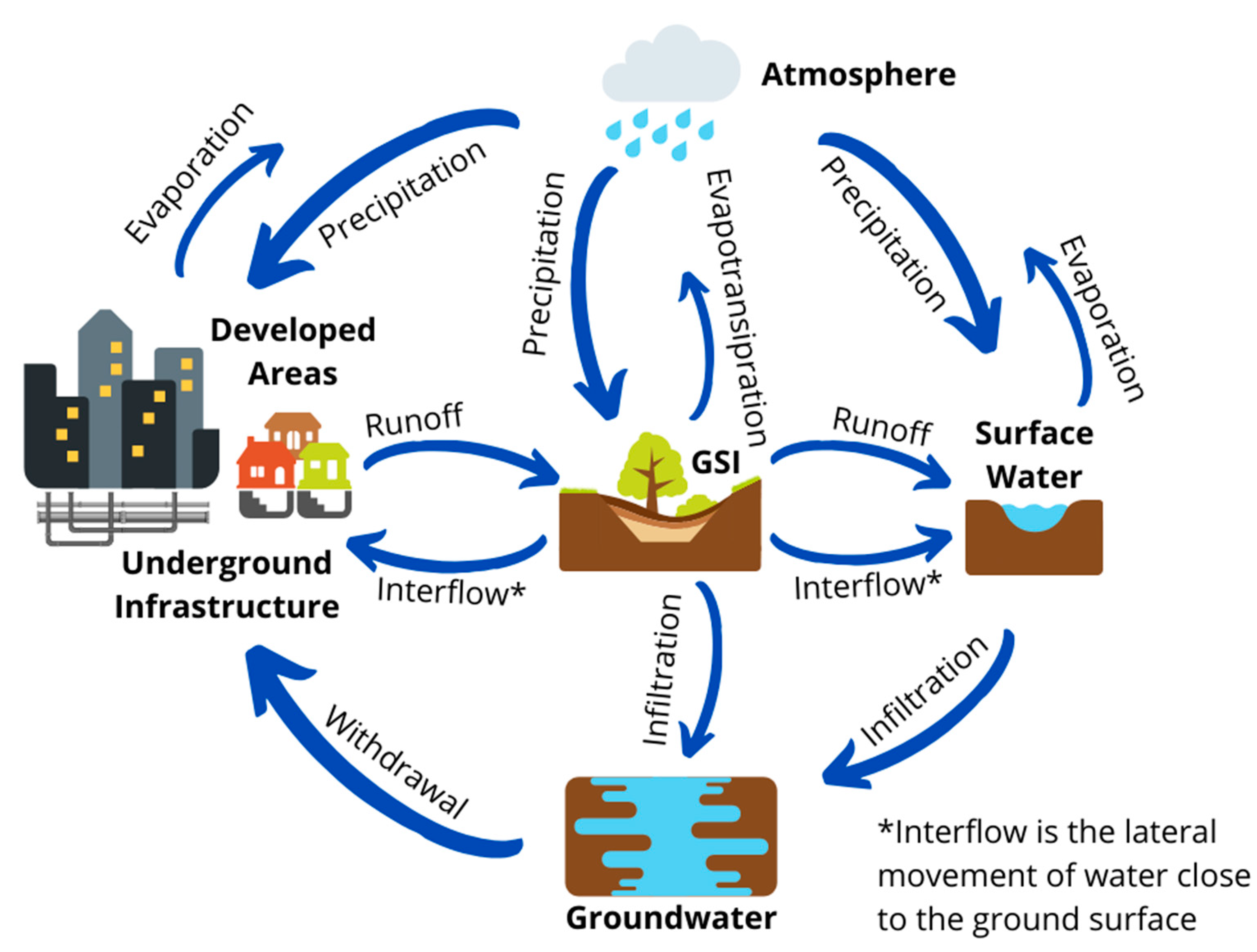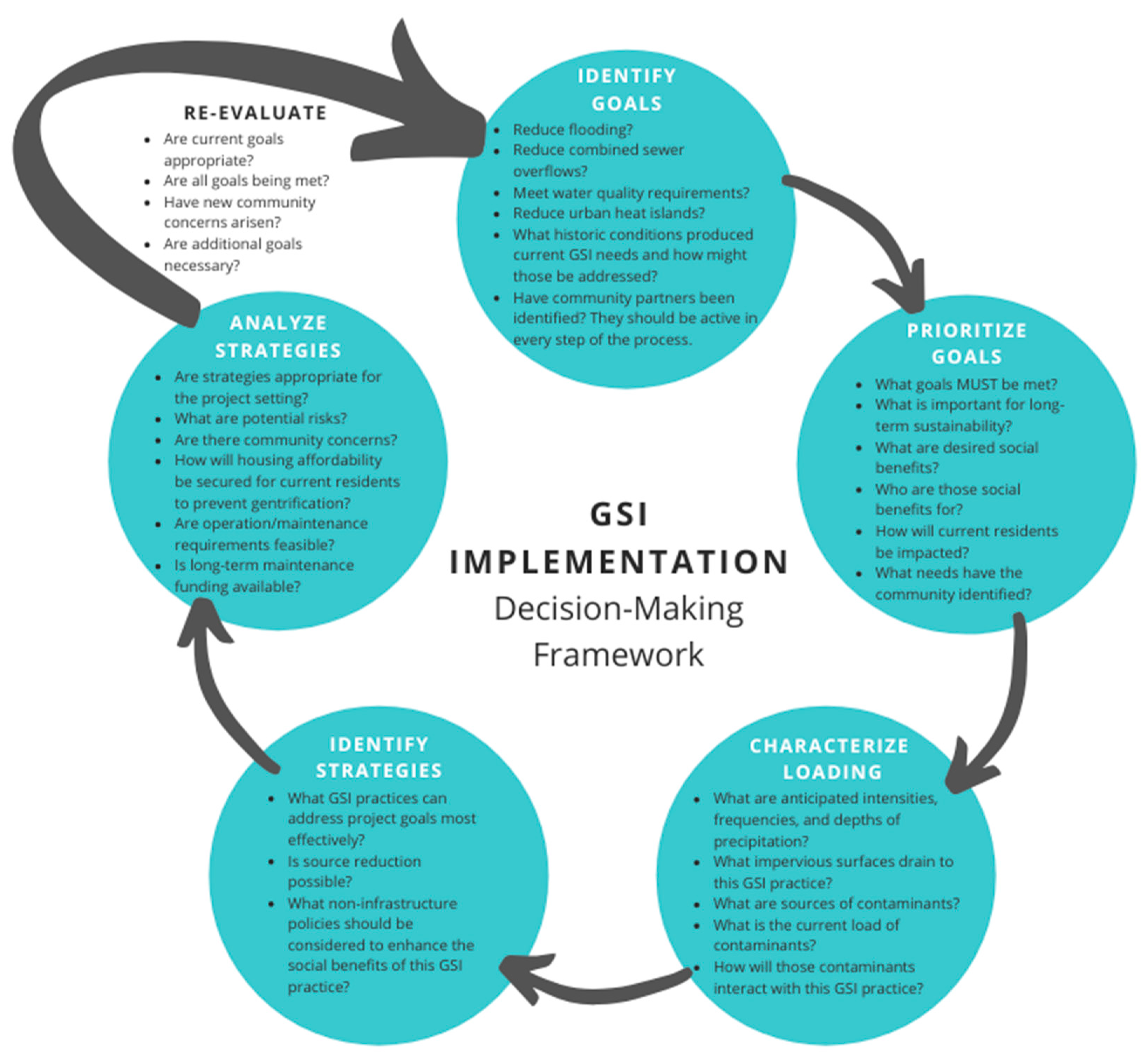
UPDATES: June 2020
It’s Not Easy Being Green
June 2020 (volume 15 - issue 1)
Contributed by Vinicius J. Taguchi1,2, Peter T. Weiss3, John S. Gulliver1,2, Mira R. Klein4, Raymond M. Hozalski1, Lawrence A. Baker5, Jacques C. Finlay6, Bonnie L. Keeler4, and John L. Nieber5
1Department of Civil, Environmental, and Geo-Engineering, University of Minnesota
2St. Anthony Falls Laboratory, University of Minnesota
3Department of Civil Engineering, Valparaiso University
4Humphrey School of Public Affairs, University of Minnesota
5Department of Bioproducts and Biosystems Engineering, University of Minnesota
6Department of Ecology, Evolution, and Behavior, University of Minnesota
Green infrastructure is becoming more common in many cities, and research to understand its effects is expanding too. We are thus increasingly able to evaluate the impacts of green infrastructure on cities. By critiquing our stormwater strategies now, we have increasing opportunities to recognize the strengths and weaknesses of these systems in various applications. Here, we briefly review recent progress, described more fully in a recent article (Taguchi et al. 2020), on understanding the potential positive and unintended negative consequences of green stormwater infrastructure (GSI). We also focus on opportunities to improve implementation and management strategies to avoid new problems for the future.
GSI is designed to address urban drainage and water quality impacts, but the potential unintended social, ecological, and human health consequences are not typically fully understood or considered. Many potential consequences are still emerging, and many others are increasingly understood in their respective fields of study but not often discussed together in the context of stormwater. We take a first step in addressing that gap by exploring tradeoffs associated with green infrastructure practices that manage urban stormwater including urban trees, stormwater ponds, filtration, infiltration, rain gardens, and green roofs (described in greater detail in Taguchi et al. 2020). Each of these green infrastructure practice types performs best under specific conditions and when targeting specific goals, but regular inspections, maintenance, and monitoring are necessary for any green stormwater infrastructure practice to succeed. We review how each of the practices is intended to function and assess ways in which they can malfunction to inform improvements in green stormwater infrastructure design, construction, monitoring, and maintenance. Our proposed decision-making framework uses biological, physical, and social science and could lead to GSI projects that are more effective, cost-efficient, and equitable.
The Complex Role of Green Stormwater Infrastructure
GSI plays a crucial role in making cities resilient to climate change and improving the built environment by lowering temperatures, providing habitat, preventing flooding, preventing pollution, and performing various other ecosystem services. But are there negative consequences of various GSI practices? For example, rain gardens, while often successful in reducing metal concentrations in stormwater, may leach phosphorus under some conditions. Other studies have shown that the long-term stormwater treatment capability of wetlands is uncertain, as over time, wetlands can release phosphorus. These and other diverse factors must be considered for GSI implementations to be successful.
GSI has the potential to generate multiple water quality, social, economic, and ecosystem benefits. Whether these goals are met depends on the underlying physical, chemical, biological, and social processes. It is important that we do not lose sight of ensuring a positive end result, which goes beyond the mere perception that installing GSI is generally good. The complex interconnections between GSI, people, and the natural and built environments around them (see Figure 1) need to be considered to ensure that the actual effects of GSI are the desired effects.
Figure 1. Conceptual diagram of water flow paths in the context of green stormwater infrastructure (GSI) (source: Taguchi et al. 2020).
One practical tool to help consider all of these different interactions and moving pieces during the already complex GSI project process would be a step-by-step guide. Many guiding frameworks have been proposed, but they tend to focus on either specific geographical settings, specific aspects of GSI projects, or specific stages in the project process. Increasingly, proposed frameworks are designed through one specific lens, such as climate change resilience, community engagement, equitable distribution, recreational green spaces, or habitat availability. What we propose is a broad and comprehensive framework that incorporates the wealth of new information generated over the past decade. Our goal is for this framework to guide the decision-making process in all geographical settings and at all project stages while encouraging continuous re-evaluation for improvement and lasting success of GSI.
A Framework for GSI Decision-Making
Our framework (see Figure 2) provides a guide for prioritizing GSI project goals while remaining considerate of the broader context around the project and how different social groups may be impacted. Success depends on strong community partnerships playing an active role in each step of the planning process. This reflective and iterative approach to GSI project implementation attempts to consider project impacts and long-term resilience early in the planning process so as to maximize the likelihood of success and minimize the likelihood of unintended consequences.
Figure 2. Decision-making framework for equitably and effectively implementing green stormwater infrastructure (GSI) (source: Taguchi et al. 2020).
We can evaluate the hydrologic impact of any GSI practice by considering the entire flow path of water through a watershed (Figure 1). Following our decision-making framework (Figure 2) can simplify the consideration of diverse factors that interact with GSI in complex ways and ultimately influence the potential for unintended consequences to occur. The following discussion will walk through that framework as an example of how it could be applied to any GSI implementation effort.
Identify Goals
Will the GSI practice treat water quality? What about water volume or peak flow rate? Or only peak flow rate? Or all three? Will the practice add organic matter and other contaminants to relatively clean rainwater or stormwater? Each of these considerations could be more or less important for a specific project depending on its goals and the characteristics of the watershed around it. If the purpose of installing GSI is to protect a lake from accumulating phosphorus and experiencing algal blooms, for example, planting trees along streets may actually lead to more nutrients flowing into the lake unless a strategic street-sweeping effort is also implemented.
Prioritize Goals
Water quality goals exist within a broader context of ecosystems and communities, which are impacted by GSI projects in diverse ways. Particularly within the framework of urban greening or urban redevelopment (also called “urban revitalization” or “urban renewal”), GSI implementers must consider how GSI practices affect communities. Specific considerations include gentrification and community resistance, especially where residents may have been excluded from the benefits of past infrastructure investments or who may be skeptical of interventions that are not perceived as “of” or “for” their communities. Integrating a socioeconomic lens from the beginning of a GSI project assessment can also help address the overlapping and conflicting goals and strategies of various groups—too often prioritized on the basis of economics alone—within a single planning effort.
Characterize Loading
We need to consider what stormwater contaminants a specific GSI practice is expected to treat. Whether the contaminants are the targets for treatment or not, they will interact with GSI practices in some way and either be treated by, accumulate in, or pass through the practice. Considering the ultimate fate of each contaminant is an important step toward mitigating potential unintended consequences.
Under certain conditions, it may be infeasible to fully treat the stormwater load entering a project site. This could be due to limitations from project funding, available area for the GSI practice, stakeholder preferences, or other unique constraints. A growing body of research suggests that undersized GSI can still provide effective treatment to at least part of the stormwater load, although additional maintenance and operation requirements will need to be taken into consideration. Undersizing may therefore be less suitable for harder-to-maintain GSI practices, such as wetlands and ponds, or practices where treatment is greatly limited by reduced temporary storage volume, such as rain gardens and green roofs. As long as care is taken so that no inadvertent harm is done, some treatment is generally better than no treatment, but additional efforts may be necessary to meet overall treatment goals.
Identify Strategies
The research literature discusses which practices have better removal rates for various contaminants, but we need to tailor a strategy to address the particular types of contaminants that this specific GSI will be encountering. If all contaminants cannot be treated with a single practice type, a treatment train approach can be implemented. For example, the remaining, untreated contaminants exiting one GSI practice could be routed into a secondary GSI practice that can effectively treat what the first practice could not. With this approach, each GSI practice can be specialized and efficient without a single practice having to handle everything.
Analyze Strategies
After determining possible strategies or combination of strategies, the next step is to rigorously analyze each for how well it meets the goals of your project. Consider the long-term maintenance requirements for each option. Consider whether contaminants will accumulate in pond sediments or filtration/infiltration media and require that the sediments/media eventually be removed or replaced. Depending on the funding, resources, and expertise available to you, it may be more cost effective to maintain certain practices over others.
Often receiving less attention than the previous economic considerations are social considerations. Do these strategies fit the goals of the community in which your project is located? Does the community have any concerns that have not been addressed? Have all community stakeholders been consulted? A conscious effort must also be made to protect housing affordability in surrounding areas and prevent gentrification. Any additional potential risks will need to be identified by working together with the community and managed appropriately by the project team with community oversight.
Proper GSI design and maintenance prevents personal injury and destruction of property but also should anticipate less obvious health and safety issues that could arise. For example, in roadside GSI applications, overgrown vegetation can obstruct vehicular lines of sight or offer hiding places for potential assailants on dimly lit streets. Pruning, thinning, and limiting the height of vegetation can easily overcome these negative consequences, but only when proper training and funding are provided for regular maintenance. Other potential hazards to account for include green spaces increasing pollen and other allergens in urban settings, the establishment and breeding of mosquitos in standing water, and the possibility of infiltrating stormwater entering adjacent basements, leaking sewer mains, or other infrastructure. These and other impacts may intensify as GSI practices age.
Re-Evaluate
Any infrastructure will be tested and challenged over its lifespan, and GSI is no different. Proper planning can anticipate many of the challenges, but continuous inspection, monitoring, and maintenance are necessary to ensure that the project goals continue to be met.
Further Information
This note is based on an open-access article that is freely available online (Taguchi et al. 2020). In the full article, specific GSI practice types are discussed in detail: Urban Trees, Stormwater Ponds, Filtration Practices, Infiltration Practices, and Rain Gardens and Green Roofs. It is our hope that continuing our conversation on GSI within this framework will help GSI be implemented effectively and without inadvertently creating new and more complex challenges.
Reference
Taguchi, V.J.; Weiss, P.T.; Gulliver, J.S.; Klein, M.R.; Hozalski, R.M.; Baker, L.A.; Finlay, J.C.; Keeler, B.L.; Nieber, J.L. It Is Not Easy Being Green: Recognizing Unintended Consequences of Green Stormwater Infrastructure. Water 2020, 12, 522. https://doi.org/10.3390/w12020522.


